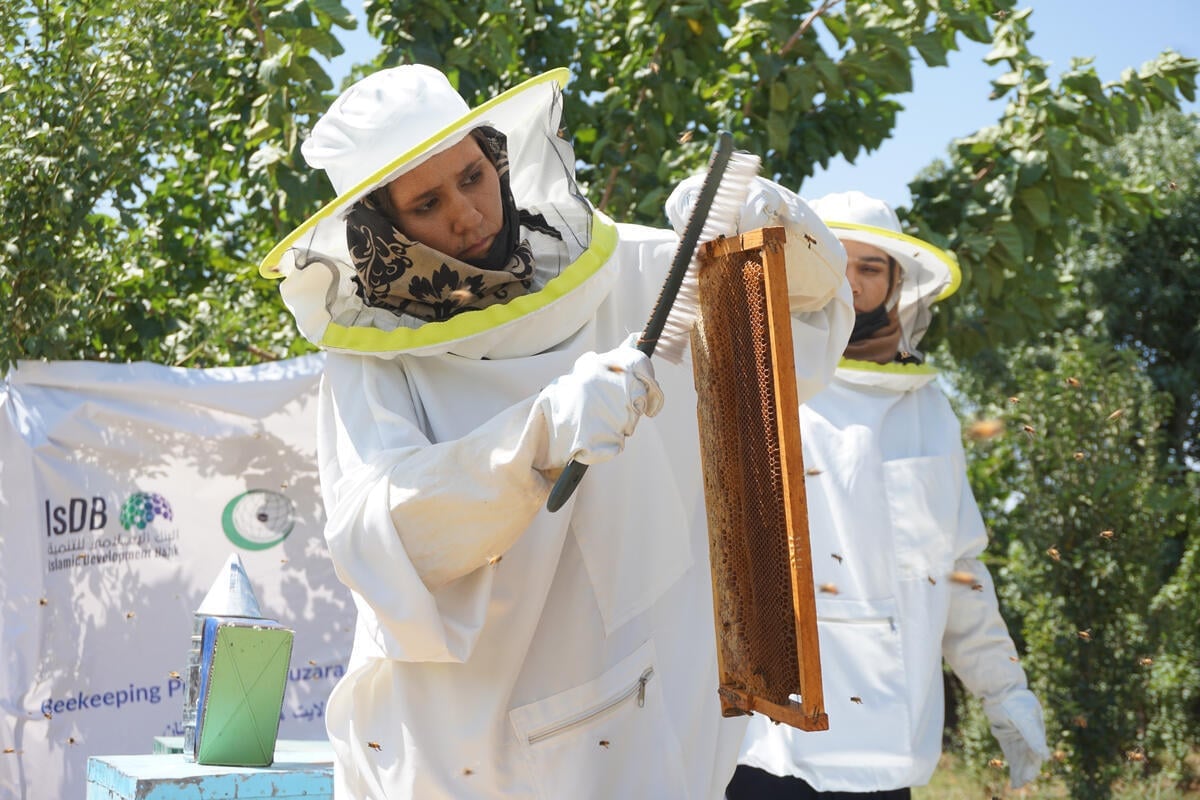Afghanistan: latest developments
Afghanistan: latest developments
The end of Ramadan this weekend saw several days of heavy rain, the first in many months, fall across most of drought-stricken Afghanistan. Snow now blankets the mountain ridges around Kabul, where the security situation is improving and where the local residents held a number of open-air music concerts over the Eid holiday weekend, with similar concerts reported in Kandahar, heralding a sea-change from the situation just a few months ago.
From Iran, more than 33,000 Afghans have spontaneously returned home since the western Afghanistan city of Herat fell to anti-Taliban forces on Nov. 12. This includes more than 7,000 people who went home last week. As we indicated Friday, spontaneous returns last week reached a new record, with more than 17,500 Afghans returning home from Pakistan and Iran. Over the last few days, returns have been quite slow, perhaps due to the Eid celebrations. In order to improve our monitoring of some of these spontaneous returns, yesterday we visited our office at Islam Qala, near the border west of
Herat, to repair telecommunications equipment, and we expect to reopen the office this week.
Today, our staff travelled from Kabul up to the Panjshir Valley to check on some 12,000 Afghans who fled the Shomali Plains, north of the capital. De-mining specialists have identified at least 12 villages in the Shomali Plains that appear to be clear of mines, and UNHCR expects to begin assisting some of these Afghans home beginning next week. Some 200,000 Afghans fled Shomali during the two decades of war, and 17 UN and NGO partners are planning to return them as regions are declared safe. UNHCR will target its assistance to some 45,000 people displaced from the area.
Beginning Wednesday, we will distribute our winter assistance kits to more than 1,400 Afghans who fled Kabul Province's Shakara Dara District in recent months and who are now displaced in the capital. Next week we'll expand the distribution of our winter kits to more than 6,000 Afghans who fled Paghman District. The winter kits contain charcoal, blankets, quilts, sweaters, two stoves for cooking and heating, kitchen utensils and other items to help needy Afghans cope with the winter.
The number of refugees crossing from southern Afghanistan into Pakistan has decreased. On Sunday, less than 100 refugees entered Pakistan through the Chaman border. It is assumed that the low traffic was mainly due to the Eid celebrations, which began on Sunday in Afghanistan and a day later in Pakistan. The number of spontaneous returns from Pakistan to Afghanistan, which exceeded 2,000 a day via Chaman late last week, also decreased.
While refugee arrivals into Pakistan's Balochistan Province have declined, UNHCR continues to work on a new site at Landi Karez, in addition to Roghani and the nearby UAE Red Crescent-sponsored site. Together, they shelter some 20,000 refugees. Some 750 tents have been set up at Landi Karez with water and sanitation facilities installed and water tanks on site. UNHCR hopes to open this new site soon and to resume the daily transfer of the some 5,000 refugees currently staying at the Killi Faizo staging site at the border.
Northwards in Pakistan's border belt, we will also resume later this week the transfers of refugees from the
overcrowded Jalozai camp in Northwest Frontier Province, as well as those squatting in the city of Peshawar.
UNHCR, together with IOM, has begun planning for a large-scale re-registration of internally displaced people in western Afghanistan near Herat. The aim is to provide proper assistance to those in need in Maslakh and Shadaye camps, to avoid
overcrowding by redirecting new arrivals to new sites, as well as to gain better understanding of the dynamics of displacement in the area, including refugees who have returned
spontaneously but who are still displaced inside Afghanistan.
The provincial authorities have given permission to open a new camp at Mir Daud, 25 km west of Herat, to
redirect new arrivals from Baghdis and Ghor areas. It is estimated that the registration exercise, planned for January, will require 1,000 personnel from various aid agencies. UNHCR will provide technical advice and train the core registration staff.
The current estimate of IDPs in the sprawling 4.5 km-long Maslakh camp 20 km west of Herat is 200,000. Another 27,000 people are encamped at the Shadaye camp, 18 km east of the city. These figures are to be verified with the planned re-registration. IOM is the coordinating agency for assisting the internally displaced in western Afghanistan.









